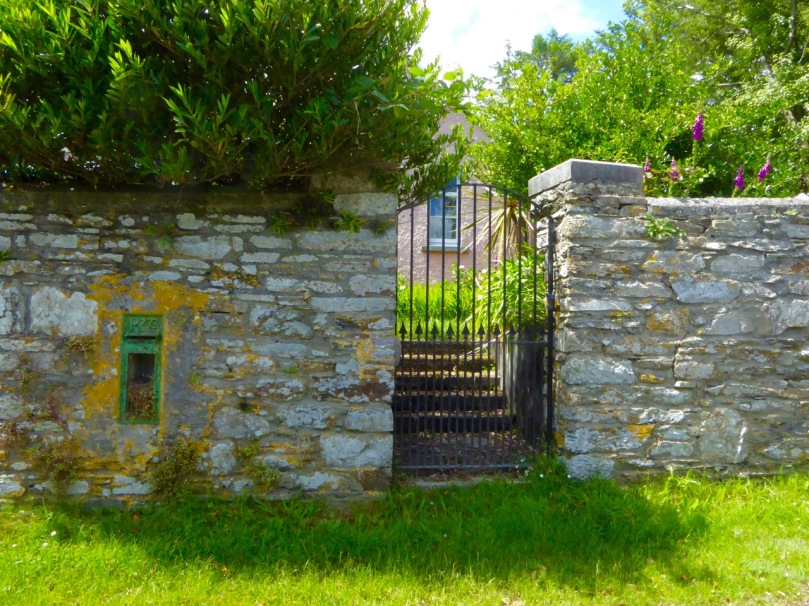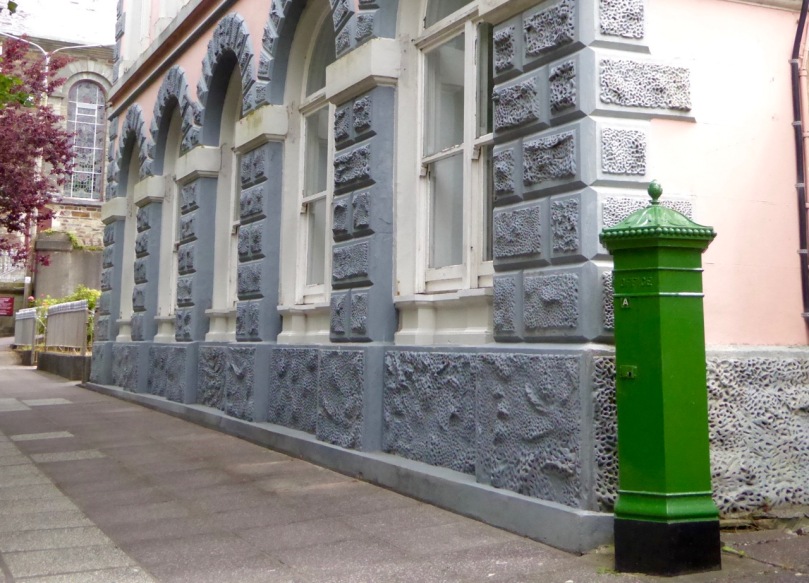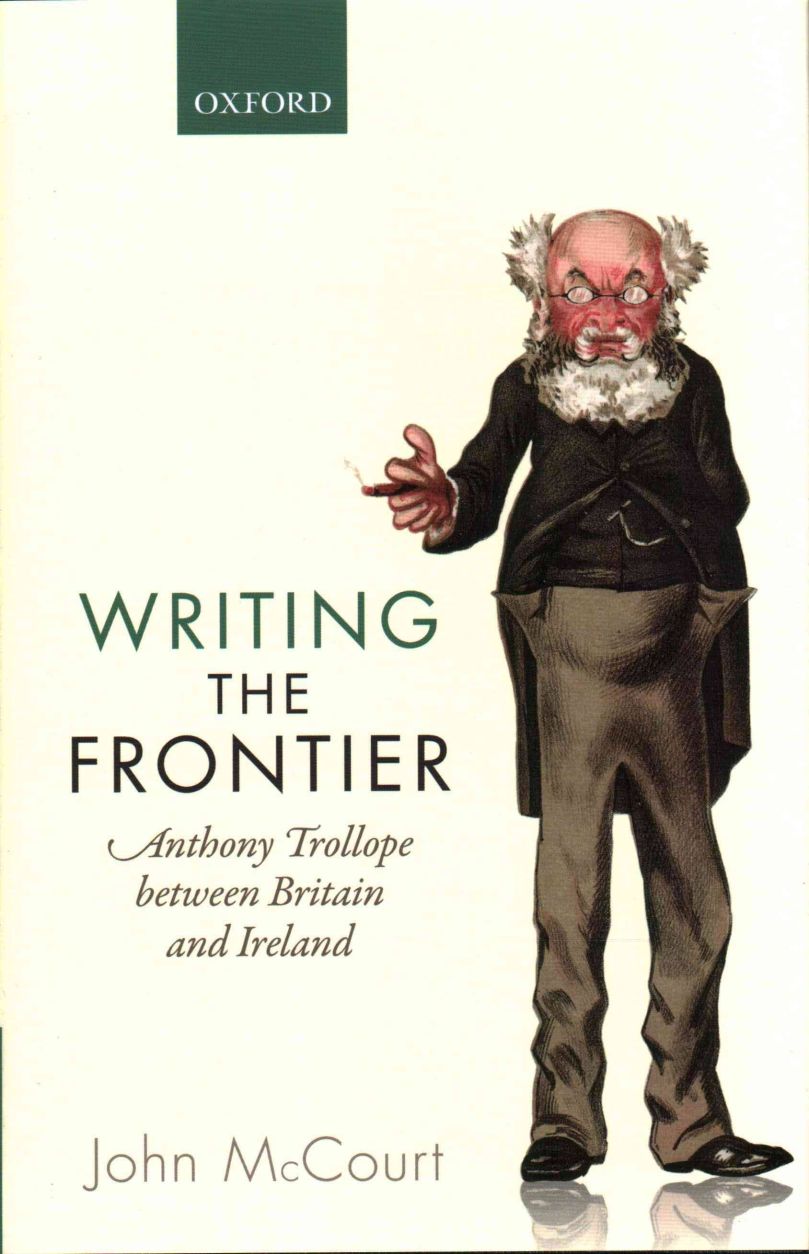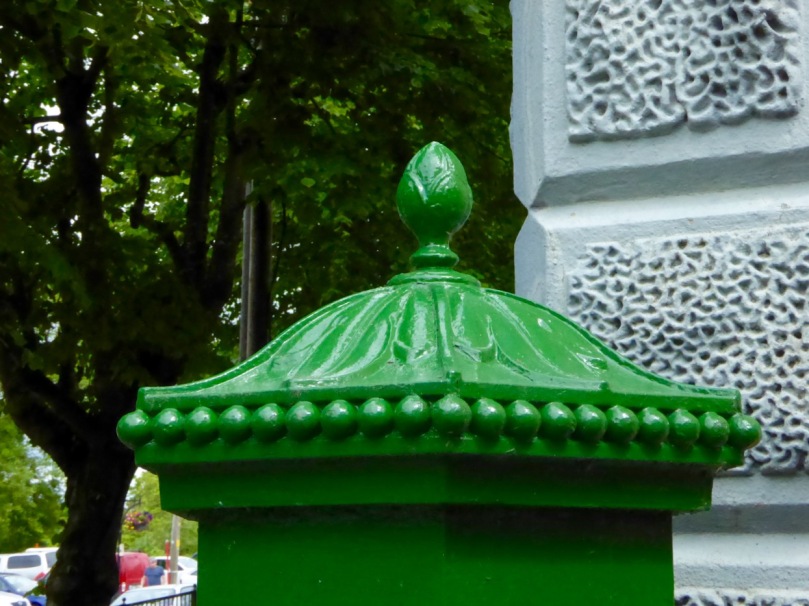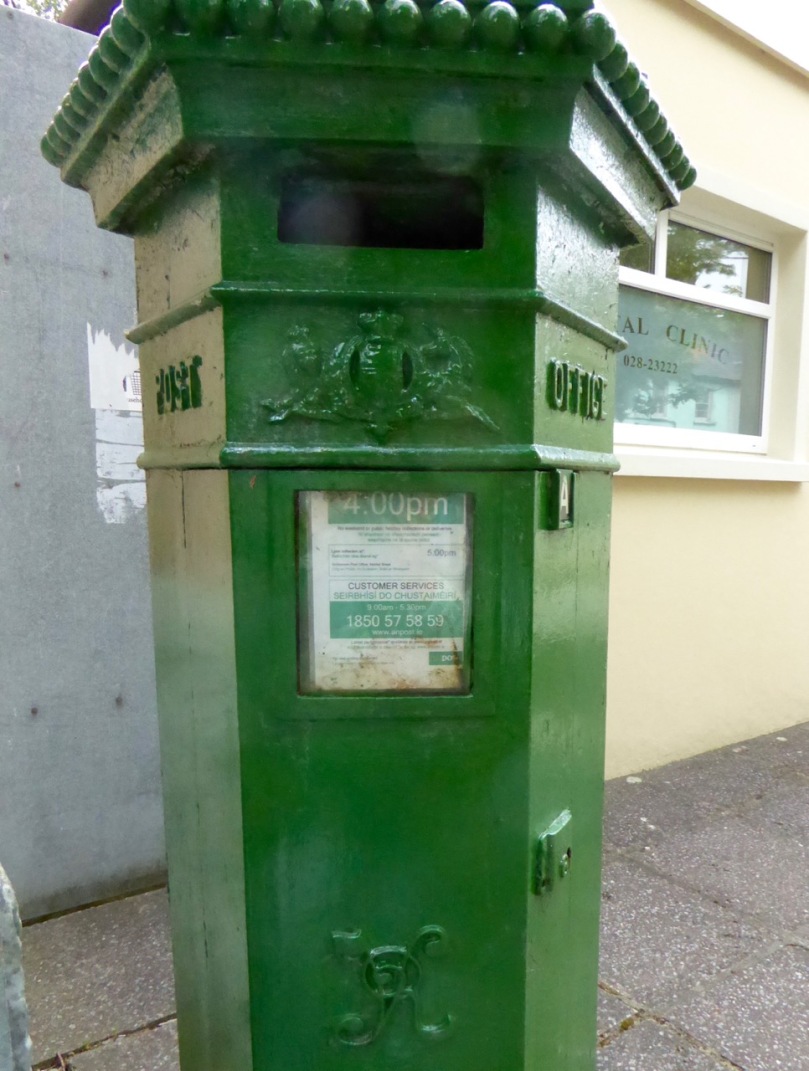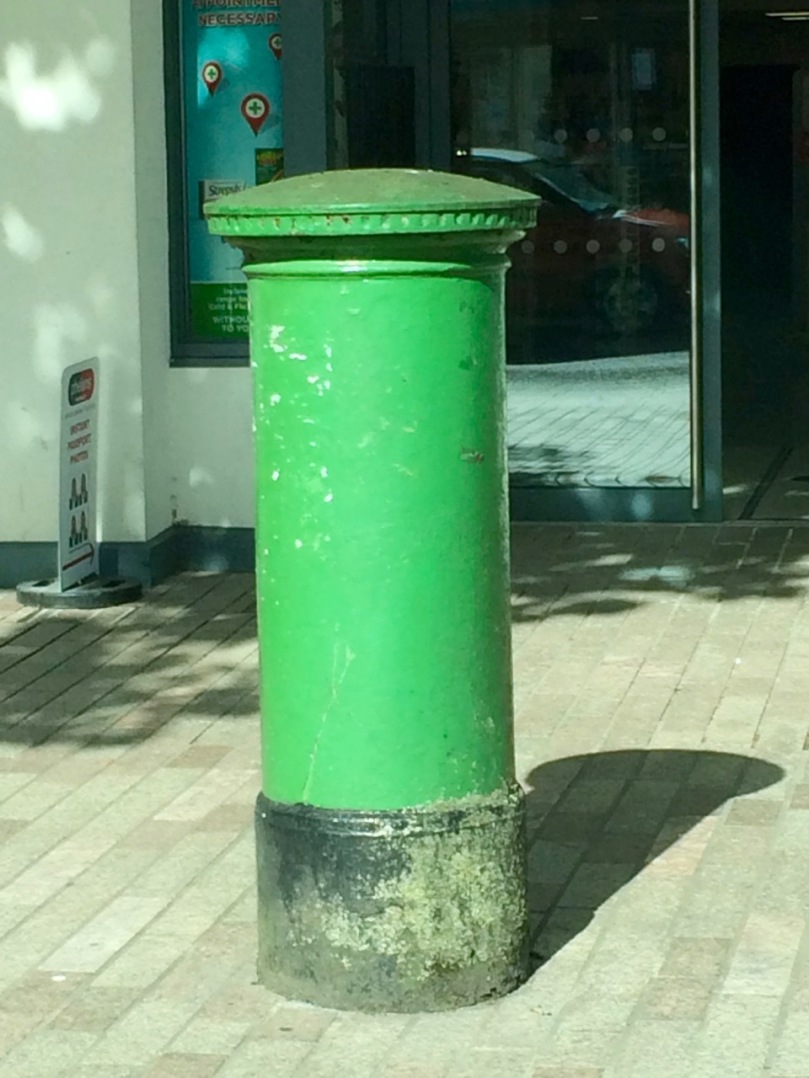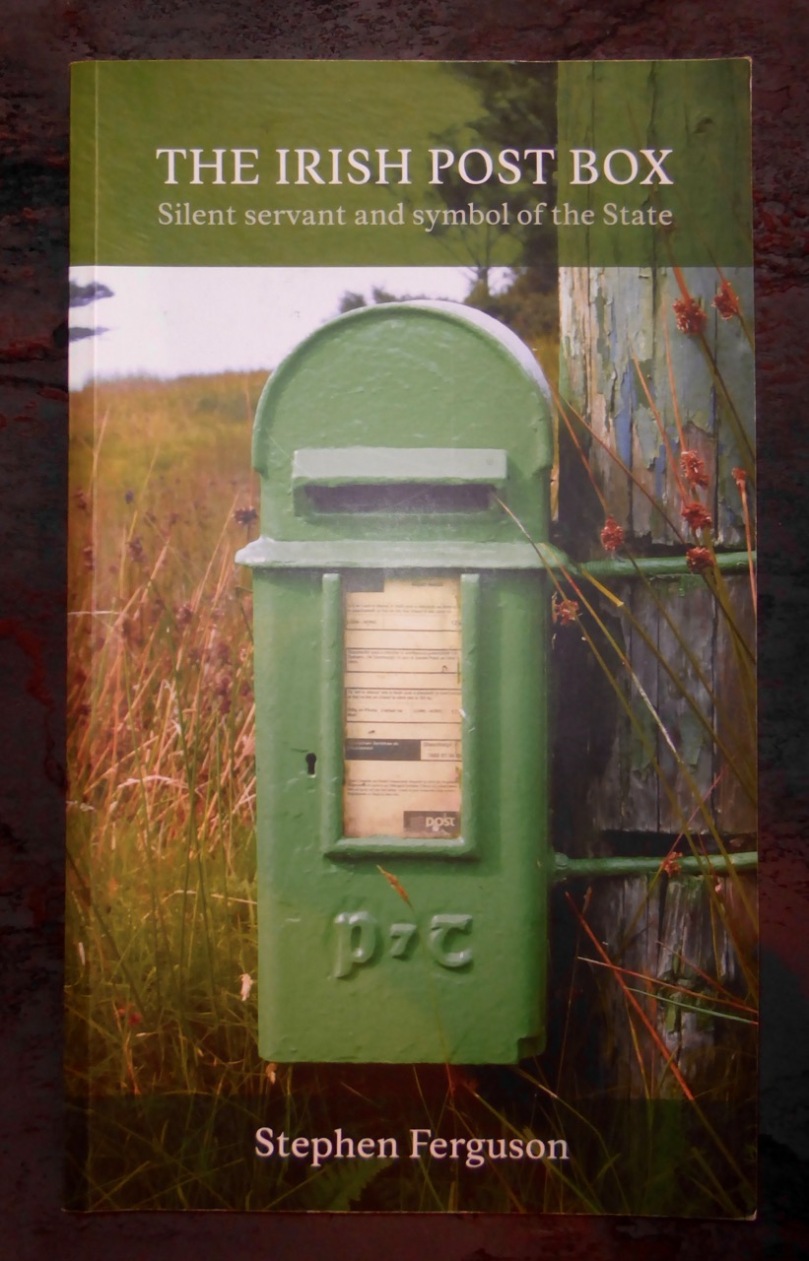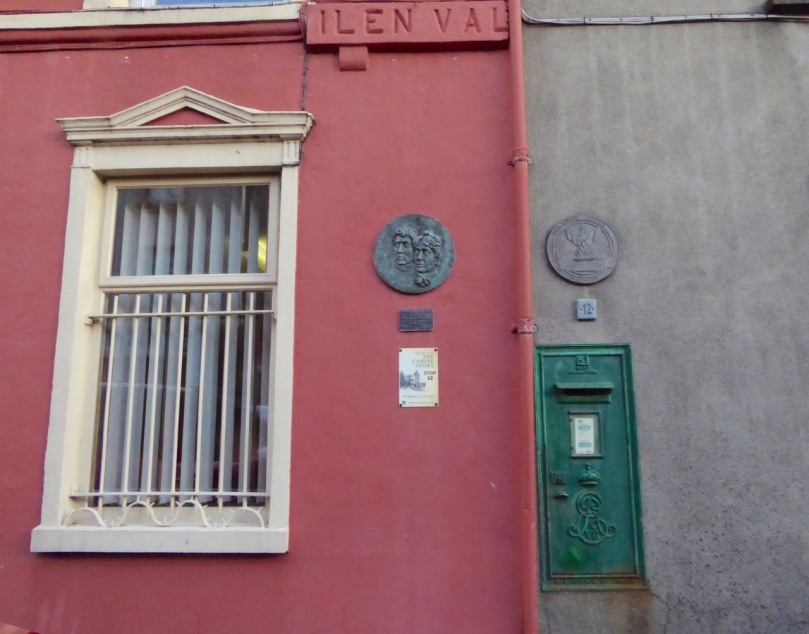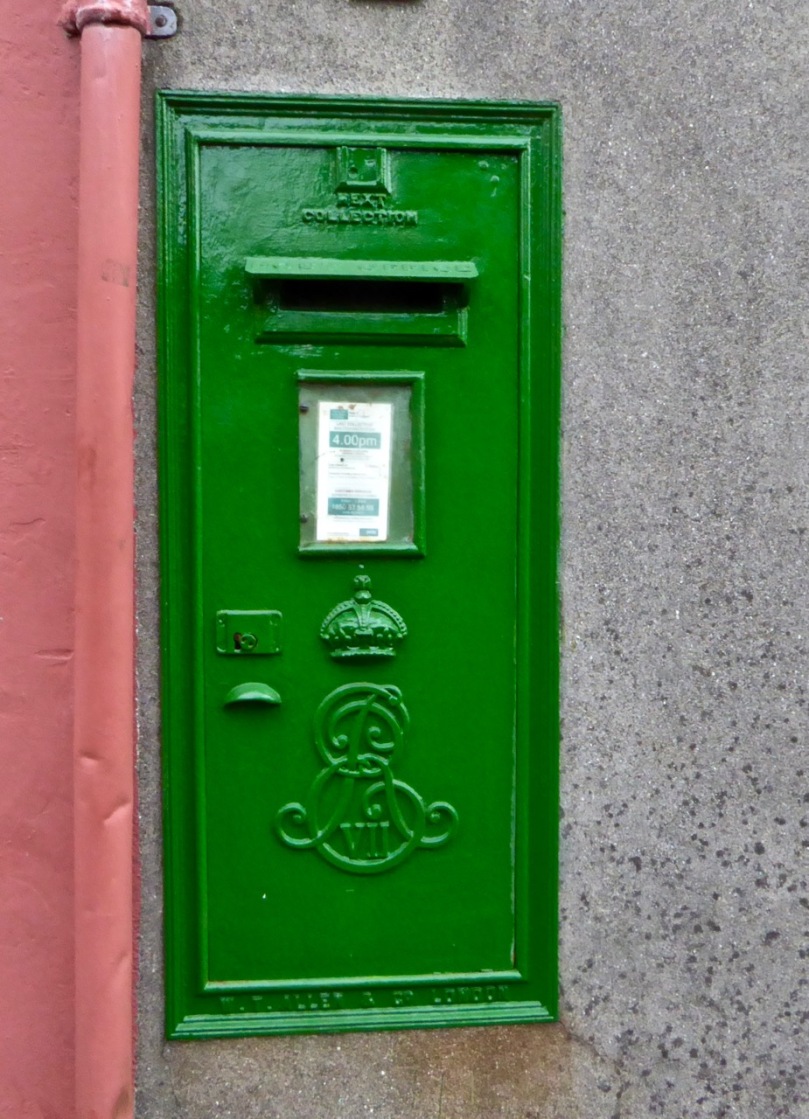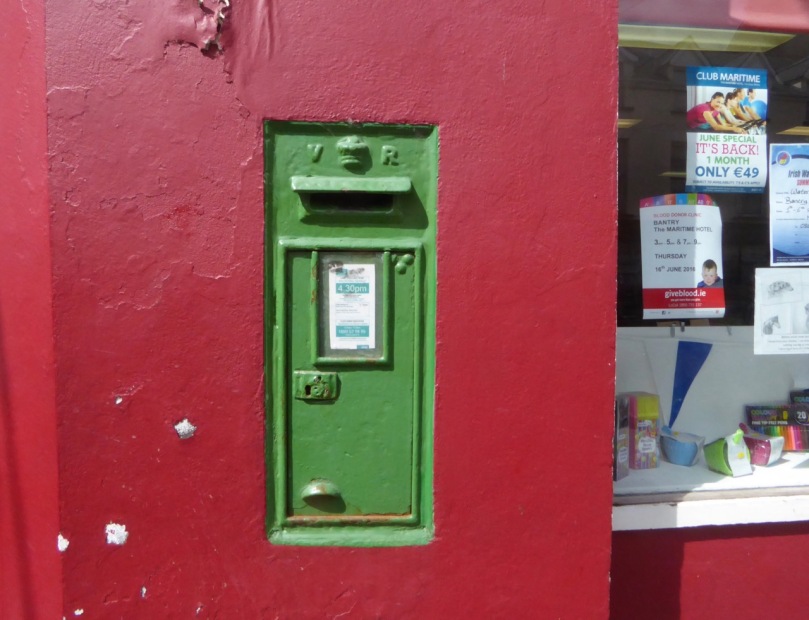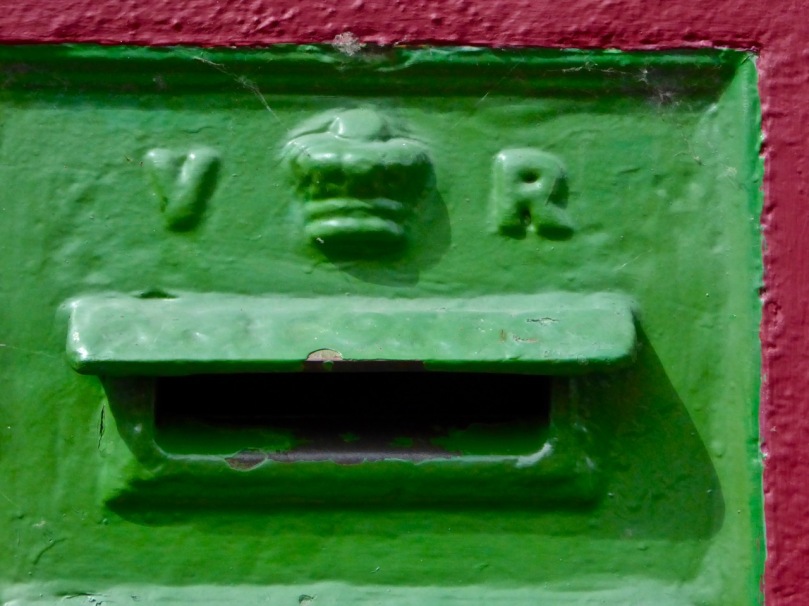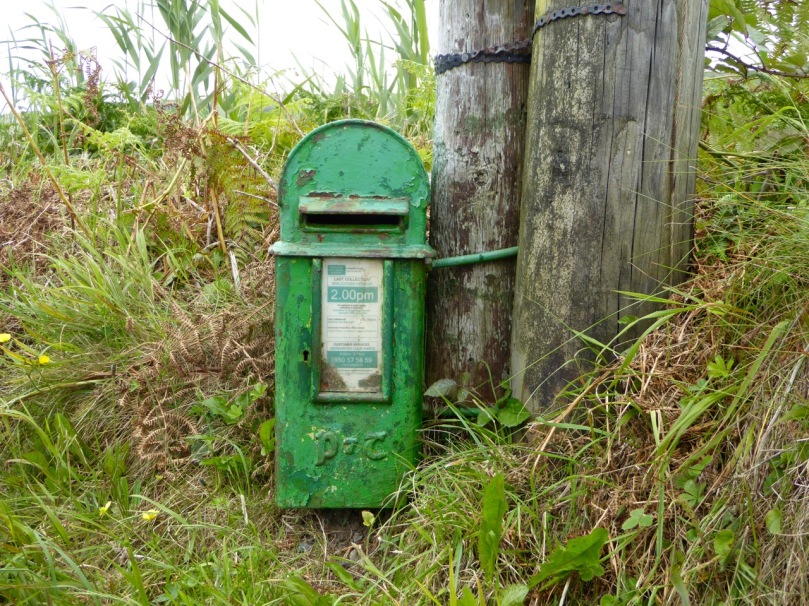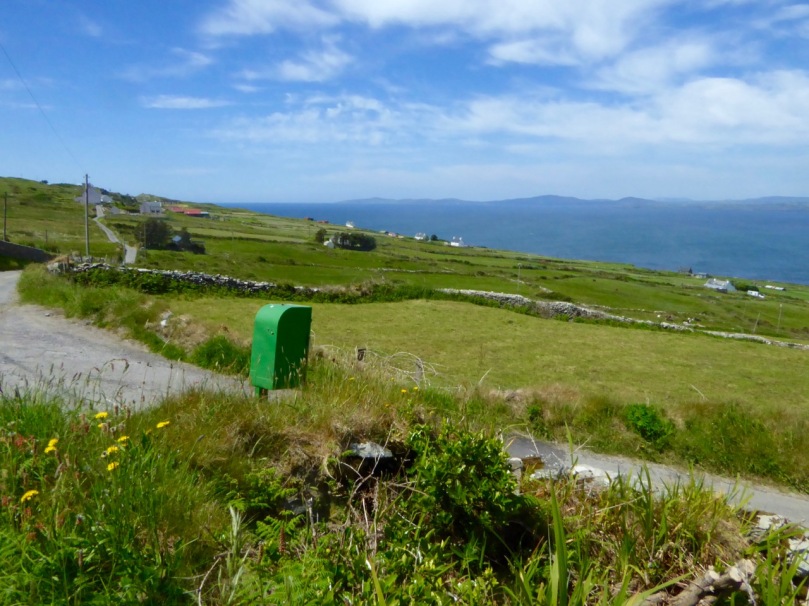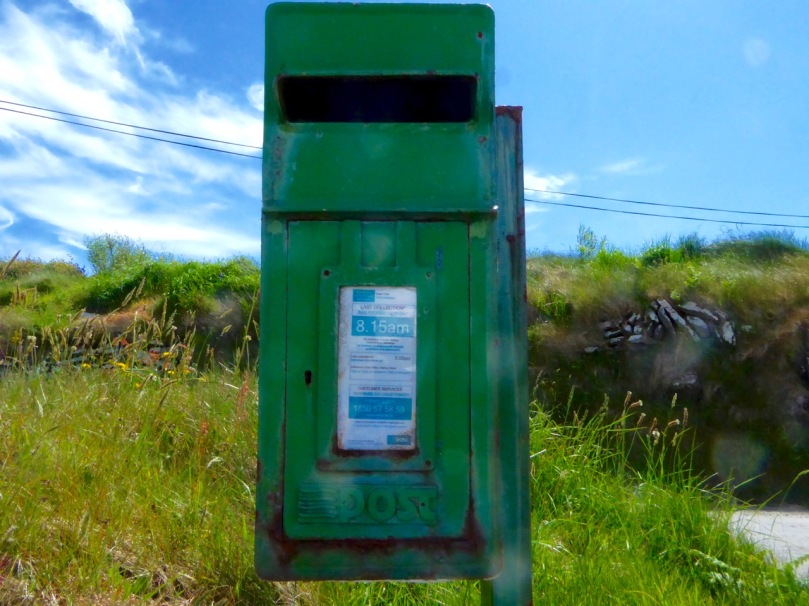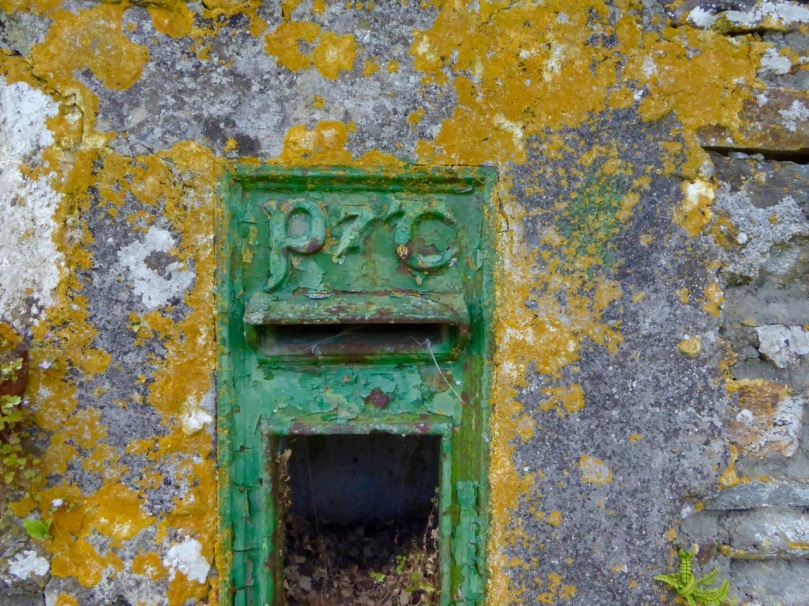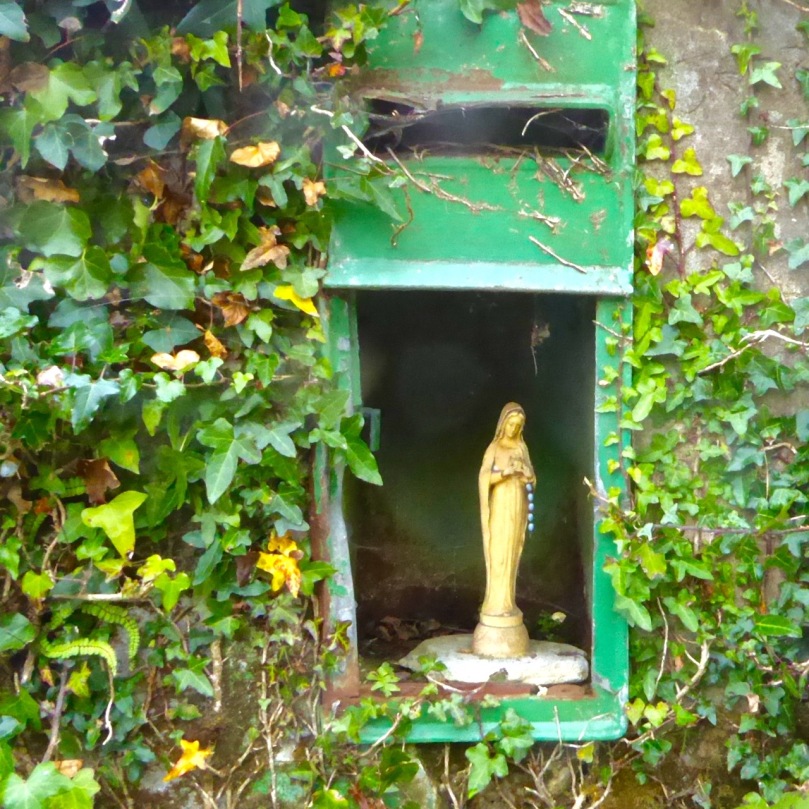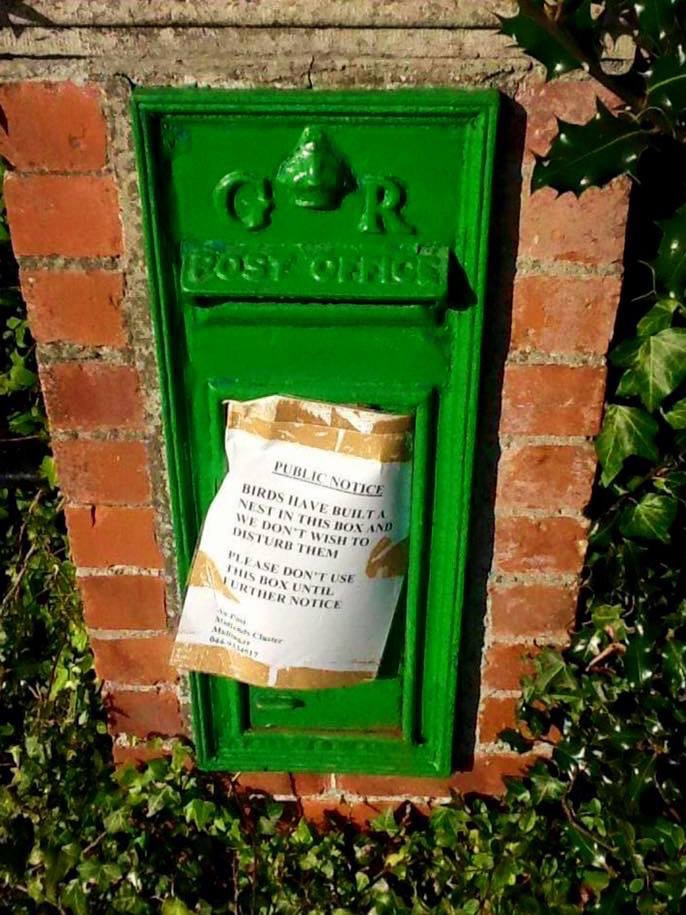-

 Daly's Distillery was an Irish whiskey distillery which operated in Cork City, Ireland from around 1820 to 1869. In 1867, the distillery was purchased by the Cork Distilleries Company (CDC), in an amalgamation of five cork distilleries. Two years later, in 1869, as the smallest CDC distillery, Daly's Distillery ceased operations. In the years that followed its closure, some of the buildings became part of Shaw's Flour Mill, and Murphy's Brewery, with others continuing to be used as warehouses by Cork Distilleries Company for several years (though information is difficult to come by, their continued existence is mentioned in Alfred Barnard's 1887 account of the distilleries of the United Kingdom).
Daly's Distillery was an Irish whiskey distillery which operated in Cork City, Ireland from around 1820 to 1869. In 1867, the distillery was purchased by the Cork Distilleries Company (CDC), in an amalgamation of five cork distilleries. Two years later, in 1869, as the smallest CDC distillery, Daly's Distillery ceased operations. In the years that followed its closure, some of the buildings became part of Shaw's Flour Mill, and Murphy's Brewery, with others continuing to be used as warehouses by Cork Distilleries Company for several years (though information is difficult to come by, their continued existence is mentioned in Alfred Barnard's 1887 account of the distilleries of the United Kingdom). -

 44cm x 33cm Rare post WW2 Fianna Fáil election manifesto poster -Step Together-Fianna Fail.The Republican Party was founded in 1926 by Eamon De Valera and his supporters after they split from Sinn Fein on the issue of abstentionism, in the aftermath of the Irish Civil War. Eamon de Valera, first registered as George de Valero; changed some time before 1901 to Edward de Valera;14 October 1882 – 29 August 1975) was a prominent statesman and political leader in 20th-century Ireland. His political career spanned over half a century, from 1917 to 1973; he served several terms as head of government and head of state. He also led the introduction of the Constitution of Ireland. Prior to de Valera's political career, he was a Commandant at Boland's Mill during the 1916 Easter Rising, an Irish revolution that would eventually contribute to Irish independence. He was arrested, sentenced to death but released for a variety of reasons, including the public response to the British execution of Rising leaders. He returned to Ireland after being jailed in England and became one of the leading political figures of the War of Independence. After the signing of the Anglo-Irish Treaty, de Valera served as the political leader of Anti-Treaty Sinn Fein until 1926, when he, along with many supporters, left the party to set up Fianna Fáil, a new political party which abandoned the policy of abstentionism from Dáil Éireann. From there, de Valera would go on to be at the forefront of Irish politics until the turn of the 1960s. He took over as President of the Executive Councilfrom W. T. Cosgrave and later Taoiseach, with the passing of Bunreacht Na hEireann (Irish constitution) in 1937. He would serve as Taoiseach on 3 occasions; from 1937 to 1948, from 1951 to 1954 and finally from 1957 to 1959. He remains the longest serving Taoiseach by total days served in the post. He resigned in 1959 upon his election as President of Ireland. By then, he had been Leader of Fianna Fáil for 33 years, and he, along with older founding members, began to take a less prominent role relative to newer ministers such as Jack Lynch, Charles Haughey and Neil Blaney. He would serve as President from 1959 to 1973, two full terms in office. De Valera's political beliefs evolved from militant Irish republicanism to strong social, cultural and economic conservatism.He has been characterised by a stern, unbending, devious demeanor. His roles in the Civil War have also portrayed him as a divisive figure in Irish history. Biographer Tim Pat Coogan sees his time in power as being characterised by economic and cultural stagnation, while Diarmaid Ferriter argues that the stereotype of de Valera as an austere, cold and even backward figure was largely manufactured in the 1960s and is misguided. Origins: Co Clare Dimensions : 50cm x 40cm
44cm x 33cm Rare post WW2 Fianna Fáil election manifesto poster -Step Together-Fianna Fail.The Republican Party was founded in 1926 by Eamon De Valera and his supporters after they split from Sinn Fein on the issue of abstentionism, in the aftermath of the Irish Civil War. Eamon de Valera, first registered as George de Valero; changed some time before 1901 to Edward de Valera;14 October 1882 – 29 August 1975) was a prominent statesman and political leader in 20th-century Ireland. His political career spanned over half a century, from 1917 to 1973; he served several terms as head of government and head of state. He also led the introduction of the Constitution of Ireland. Prior to de Valera's political career, he was a Commandant at Boland's Mill during the 1916 Easter Rising, an Irish revolution that would eventually contribute to Irish independence. He was arrested, sentenced to death but released for a variety of reasons, including the public response to the British execution of Rising leaders. He returned to Ireland after being jailed in England and became one of the leading political figures of the War of Independence. After the signing of the Anglo-Irish Treaty, de Valera served as the political leader of Anti-Treaty Sinn Fein until 1926, when he, along with many supporters, left the party to set up Fianna Fáil, a new political party which abandoned the policy of abstentionism from Dáil Éireann. From there, de Valera would go on to be at the forefront of Irish politics until the turn of the 1960s. He took over as President of the Executive Councilfrom W. T. Cosgrave and later Taoiseach, with the passing of Bunreacht Na hEireann (Irish constitution) in 1937. He would serve as Taoiseach on 3 occasions; from 1937 to 1948, from 1951 to 1954 and finally from 1957 to 1959. He remains the longest serving Taoiseach by total days served in the post. He resigned in 1959 upon his election as President of Ireland. By then, he had been Leader of Fianna Fáil for 33 years, and he, along with older founding members, began to take a less prominent role relative to newer ministers such as Jack Lynch, Charles Haughey and Neil Blaney. He would serve as President from 1959 to 1973, two full terms in office. De Valera's political beliefs evolved from militant Irish republicanism to strong social, cultural and economic conservatism.He has been characterised by a stern, unbending, devious demeanor. His roles in the Civil War have also portrayed him as a divisive figure in Irish history. Biographer Tim Pat Coogan sees his time in power as being characterised by economic and cultural stagnation, while Diarmaid Ferriter argues that the stereotype of de Valera as an austere, cold and even backward figure was largely manufactured in the 1960s and is misguided. Origins: Co Clare Dimensions : 50cm x 40cm -

 35cm x 40cmEFORE THE ADVENT of opinion polls, by-elections were the most reliable means of gauging the mood of the electorate.For decades before the 1916 Rising, Irish nationalists represented by the Irish Parliamentary Party (IPP) sought Irish home rule – a subordinate parliament and government in Dublin.But the emergence of Sinn Féin, which championed an independent Irish republic, transformed the political landscape. In 1917 Sinn Féin won four by-elections on the bounce in North Roscommon, South Longford, East Clare and South Kilkenny.No victory was more emphatic than East Clare and no winning candidate more central to the future history of Ireland.A political noviceThe victor was a political novice with little experience of public speaking outside the classroom. The senior surviving Volunteer from 1916, he was largely unknown before the East Clare by-election.But after it he was catapulted to national prominence, became president of Sinn Féin and represented East Clare for the next four decades. That soldier turned politician was De Valera .The East Clare by-election on July 10 was precipitated by the death on the Western Front of the sitting MP: Major Willie Redmond, brother of the leader of the IPP.Patrick Lynch KC, a barrister, contested the seat for the IPP under the banner: “Clare for a Clareman – Lynch is the Man”. His supporters, who were strongest in Ennis, contended that an Irish republic was a political fantasy. For several reasons, few expected anything other than a Sinn Féin victory.One of the most rebellious counties in IrelandFirst, Clare was one of the most rebellious counties in Ireland and during the by-election the county inspector of the Royal Irish Constabulary had to obtain a draft of 150 soldiers. Eight months after the by-election Clare became the first county to be placed under military rule since the 1916 Rising.Second, no election had been contested in East Clare since 1895 and the IPP’s constituency machine was decrepit and almost bankrupt. By contrast, the Sinn Féin campaign was highly organised and backboned by the revamped Irish Volunteers who were unafraid to defy the authorities and acted as a private police force.De Valera, who had only been released from prison on 16 June, campaigned in his Volunteer uniform and told the electors that, “every vote you give now is as good as the crack of a rifle in proclaiming your desire for freedom”.Third, buoyed up by its earlier electoral successes Sinn Féin attracted not just the support of the young but that of the Clare Champion (the county newspaper) and, more significantly, the endorsement of Bishop Michael Fogarty of Killaloe and the majority of younger clergy. The Catholic card was played astutely and reassuringly by de Valera.Although everyone expected a victory for de Valera, no one expected so stunning a winning margin. When the result of the election was announced on July 11 de Valera had secured 5,010 votes to Lynch’s 2,035.A game changerThe rural vote had turned against the IPP. The Freeman’s Journal, the newspaper of the IPP, lamented that, “East Clare has declared for revolution by an overwhelming majority”. Lynch was not the man after all.The East Clare by-election was a milestone for Sinn Féin because it secured a striking popular mandate which helped the organisation to continue its rapid growth ahead of the 1918 general election.For de Valera his victory was a pivotal episode in his progression from militant to political republican. More than any other factor, the scale of his success propelled him to the presidency of Sinn Féin in October 1917 and launched his long political career. For a man who in the early months of 1917 wished to have no truck with politics this was quite a turn of events.
35cm x 40cmEFORE THE ADVENT of opinion polls, by-elections were the most reliable means of gauging the mood of the electorate.For decades before the 1916 Rising, Irish nationalists represented by the Irish Parliamentary Party (IPP) sought Irish home rule – a subordinate parliament and government in Dublin.But the emergence of Sinn Féin, which championed an independent Irish republic, transformed the political landscape. In 1917 Sinn Féin won four by-elections on the bounce in North Roscommon, South Longford, East Clare and South Kilkenny.No victory was more emphatic than East Clare and no winning candidate more central to the future history of Ireland.A political noviceThe victor was a political novice with little experience of public speaking outside the classroom. The senior surviving Volunteer from 1916, he was largely unknown before the East Clare by-election.But after it he was catapulted to national prominence, became president of Sinn Féin and represented East Clare for the next four decades. That soldier turned politician was De Valera .The East Clare by-election on July 10 was precipitated by the death on the Western Front of the sitting MP: Major Willie Redmond, brother of the leader of the IPP.Patrick Lynch KC, a barrister, contested the seat for the IPP under the banner: “Clare for a Clareman – Lynch is the Man”. His supporters, who were strongest in Ennis, contended that an Irish republic was a political fantasy. For several reasons, few expected anything other than a Sinn Féin victory.One of the most rebellious counties in IrelandFirst, Clare was one of the most rebellious counties in Ireland and during the by-election the county inspector of the Royal Irish Constabulary had to obtain a draft of 150 soldiers. Eight months after the by-election Clare became the first county to be placed under military rule since the 1916 Rising.Second, no election had been contested in East Clare since 1895 and the IPP’s constituency machine was decrepit and almost bankrupt. By contrast, the Sinn Féin campaign was highly organised and backboned by the revamped Irish Volunteers who were unafraid to defy the authorities and acted as a private police force.De Valera, who had only been released from prison on 16 June, campaigned in his Volunteer uniform and told the electors that, “every vote you give now is as good as the crack of a rifle in proclaiming your desire for freedom”.Third, buoyed up by its earlier electoral successes Sinn Féin attracted not just the support of the young but that of the Clare Champion (the county newspaper) and, more significantly, the endorsement of Bishop Michael Fogarty of Killaloe and the majority of younger clergy. The Catholic card was played astutely and reassuringly by de Valera.Although everyone expected a victory for de Valera, no one expected so stunning a winning margin. When the result of the election was announced on July 11 de Valera had secured 5,010 votes to Lynch’s 2,035.A game changerThe rural vote had turned against the IPP. The Freeman’s Journal, the newspaper of the IPP, lamented that, “East Clare has declared for revolution by an overwhelming majority”. Lynch was not the man after all.The East Clare by-election was a milestone for Sinn Féin because it secured a striking popular mandate which helped the organisation to continue its rapid growth ahead of the 1918 general election.For de Valera his victory was a pivotal episode in his progression from militant to political republican. More than any other factor, the scale of his success propelled him to the presidency of Sinn Féin in October 1917 and launched his long political career. For a man who in the early months of 1917 wished to have no truck with politics this was quite a turn of events. -

 65cm x 50cm PHOTOGRAPHER TARQUIN BLAKE has a penchant for visiting parts of Ireland people don’t always get to see. He’s written about and photographed Ireland’s abandoned ‘big houses’ and haunted houses, but for his latest book he turns his sights on Irish castles. Like his previous books, Exploring Irish Castles is a coffee table book filled with gorgeous photos and the background stories to some fascinating locations. While his previous book ideas came from his own travels throughout Ireland, this topic was suggested by his publisher – showing how popular Irish castles are to the Irish and those abroad. “I was given an objective – the book had to cover all the main Irish castles and it should cover a variety of ruins, family homes and heritage sites that are open to the public,” explains Blake. “I went off and started investigating all the Irish castles, drawing up a list of the best ones. I started going out visiting them – I visited about 100 castles and 40 of those ended up in the book.” He wanted to cover all the main periods of Irish castles, from the big Anglo Norman castles like Trim Castle to the tower houses and fortified houses, which are the commonest small castle in Ireland. The book also has a selection of the neo gothic castles – the Victorian country houses made to look like castles. Blake did a lot of in-depth research into the castles for the book. “What I found was a lot of the tower houses would have very little history so they weren’t very suitable for including in the book,” he says. There are around 6,000 towers in Ireland, but Blake says that there are very few records related to them around. He gave some insight into the history of castles here: “The concept of using building methods to protect territory was introduced from overseas in the 12th century, when the Irish term caisleán began to appear in manuscripts. By the 16th century, Ireland had become the most castellated country in Europe.” “The tower houses were built up until the early 1600s and it’s generally recognised that Cromwell’s invasion put an end to true castle building,” says Blake. This is because after the invention of artillery, the castle didn’t provide enough protection from invaders. “Before that they were pretty much invincible and everybody was building them and everyone was living in them,” he says. “After Cromwell, they went back to the renaissance houses, and the big country houses in the Georgian period.” The book features very well-known castles, such as Trim Castle and Blarney Castle, but also some lesser-known locations, such as Co Galway’s Fiddaun Castle. It’s all about trying to encourage people to visit the spots, says Blake. One of the most interesting locations was Tullynally Castle in Co Westmeath. Thomas Packenham, the historian, and his family still live there. “It was a fascinating place to visit,” says Blake. “It’s pretty impressive – it is the largest family home in Ireland.”For me the most interesting part was visiting the places and meeting the people. It was great seeing Tullynally, that’s an example there of seeing how people still live in these places. They have massive kitchen and the huge halls, and you can’t really imagine the rooms – big enough to fit 200-300 people.
65cm x 50cm PHOTOGRAPHER TARQUIN BLAKE has a penchant for visiting parts of Ireland people don’t always get to see. He’s written about and photographed Ireland’s abandoned ‘big houses’ and haunted houses, but for his latest book he turns his sights on Irish castles. Like his previous books, Exploring Irish Castles is a coffee table book filled with gorgeous photos and the background stories to some fascinating locations. While his previous book ideas came from his own travels throughout Ireland, this topic was suggested by his publisher – showing how popular Irish castles are to the Irish and those abroad. “I was given an objective – the book had to cover all the main Irish castles and it should cover a variety of ruins, family homes and heritage sites that are open to the public,” explains Blake. “I went off and started investigating all the Irish castles, drawing up a list of the best ones. I started going out visiting them – I visited about 100 castles and 40 of those ended up in the book.” He wanted to cover all the main periods of Irish castles, from the big Anglo Norman castles like Trim Castle to the tower houses and fortified houses, which are the commonest small castle in Ireland. The book also has a selection of the neo gothic castles – the Victorian country houses made to look like castles. Blake did a lot of in-depth research into the castles for the book. “What I found was a lot of the tower houses would have very little history so they weren’t very suitable for including in the book,” he says. There are around 6,000 towers in Ireland, but Blake says that there are very few records related to them around. He gave some insight into the history of castles here: “The concept of using building methods to protect territory was introduced from overseas in the 12th century, when the Irish term caisleán began to appear in manuscripts. By the 16th century, Ireland had become the most castellated country in Europe.” “The tower houses were built up until the early 1600s and it’s generally recognised that Cromwell’s invasion put an end to true castle building,” says Blake. This is because after the invention of artillery, the castle didn’t provide enough protection from invaders. “Before that they were pretty much invincible and everybody was building them and everyone was living in them,” he says. “After Cromwell, they went back to the renaissance houses, and the big country houses in the Georgian period.” The book features very well-known castles, such as Trim Castle and Blarney Castle, but also some lesser-known locations, such as Co Galway’s Fiddaun Castle. It’s all about trying to encourage people to visit the spots, says Blake. One of the most interesting locations was Tullynally Castle in Co Westmeath. Thomas Packenham, the historian, and his family still live there. “It was a fascinating place to visit,” says Blake. “It’s pretty impressive – it is the largest family home in Ireland.”For me the most interesting part was visiting the places and meeting the people. It was great seeing Tullynally, that’s an example there of seeing how people still live in these places. They have massive kitchen and the huge halls, and you can’t really imagine the rooms – big enough to fit 200-300 people.Castle facts
Kilwaughter Castle, County Antrim- There are quite a number of Patrick Agnews in the family, resulting in a bit of a genealogical headache.
- It was used to billet Americans from the 644th Tank Destroyer Battalion in preparation for D-Day.
- It occupies a wild position perched on top of the cliff. In 1639 a section of the kitchen collapsed when the cliff face underneath gave way. The dinner, kitchen tables, and all the silverware fell into the sea below.
- Nine of the kitchen staff fell to their deaths and the kitchen boy only survived by clinging to a corner of the crumbling wall.
- After his father’s death in 1581, David Barry, fifth Viscount Buttevant, set fire to the castle, rendering it unliveable so that Sir Walter Raleigh couldn’t have it.
- In 1751, Richard Barry became the sixth earl when he was six years old. A reckless gambler and drinker, he served briefly in the 9th Regiment of Dragoons before dying of a fever at the age of 28.
- In 1599, four-year-old Elizabeth, Queen Elizabeth’s namesake and godchild, inherited the Mallow property. The story goes that the Queen sent her godchild two white deer as a christening gift, and the herd of white deer at Mallow today is descended from this original pair.
- In the eighteenth century, Mallow Castle became fantastically famous for its social goings-on, becoming known as ‘The Bath of Ireland’.
- Sir John Jephson upheld a bizarre ritual of having a white rat on a small chair at his right-hand side during all meals, believing this would keep him free from debt. Apparently, the white rat then often appeared before the head of the Jephson family, predicting their imminent demise.
- The hill upon which it is built is a long extinct volcano.
- ‘Fighting Charlie’ was a mean landlord – he gave just £30 for famine relief but spent £15,000 renovating his home.
- You can see the Isle of Man and Scotland from the tower on a clear day.
- The third Earl of Rosse built the 16-ton telescope called Leviathan, which remained the world’s largest telescope until 1917.
- His wife, Lady Mary, was an accomplished early pioneer of photography and installed a darkroom. It is the oldest surviving example of its kind in the world.
- Their son Charles invented the steam turbine. His company eventually became part of Rolls-Royce and still survives as a division of Siemens.
- Jonathan Charles Darby found three upright skeletons sealed into a wall and bricked them up again because he decided there must have been a good reason to put them there.
- It has a reputation as the most haunted castle in Europe.
-
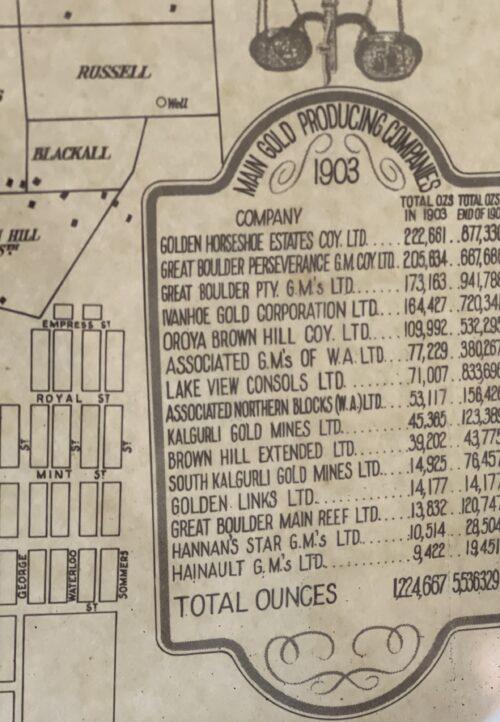
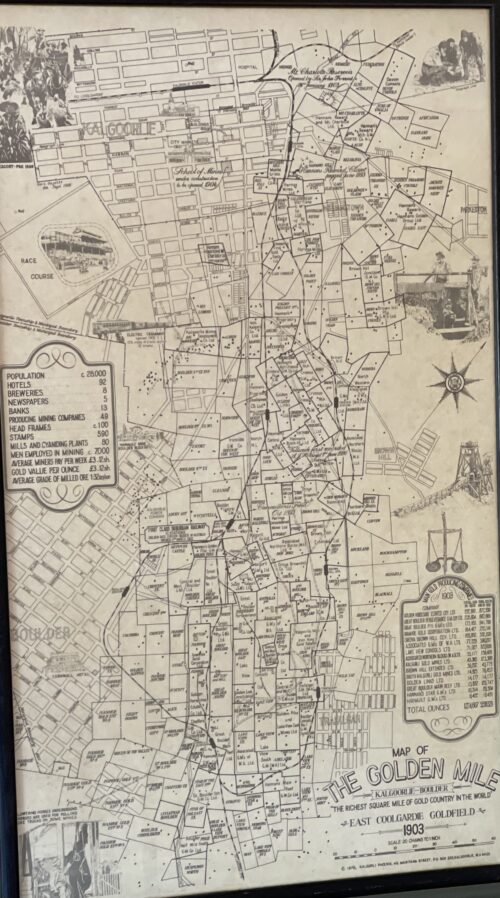 33cm x 57cm In the winter of 1893, prospectors Patrick (Paddy) Hannan, Tom Flanagan, and Dan Shea were travelling to Mount Youle, when one of their horses cast a shoe. During the halt in their journey, the men noticed signs of gold in the area around the foot of what is now the Mount Charlotte gold mine, located on a small hill north of the current city, and decided to stay and investigate. On 17 June 1893, Hannan filed a Reward Claim, leading to hundreds of men swarming to the area in search of gold, and Kalgoorlie, originally called Hannan's Find, was born.The population of the town was 2,018 (1,516 males and 502 females) in 1898. The mining of gold, along with other metals such as nickel, has been a major industry in Kalgoorlie ever since, and today employs about one-quarter of Kalgoorlie's workforce and generates a significant proportion of its income. The concentrated area of large gold mines surrounding the original Hannan's find is often referred to as the Golden Mile, and was sometimes referred to as the world's richest square mile of earth. In 1901, the population of Kalgoorlie was 4,793 (3,087 males and 1,706 females) which increased to 6,790 (3,904 males and 2,886 females) by 1903. The 3 ft 6 in (1,067 mm) narrow-gauge Government Eastern Goldfields Railway line reached Kalgoorlie station in 1896, and the main named railway service from Perth was the overnight sleeper train The Westland, which ran until the 1970s. In 1917, a 4 ft 8+1⁄2 in(1,435 mm) standard gauge railway line was completed, connecting Kalgoorlie to Port Augusta, South Australia, across 2,000 kilometres (1,243 mi) of desert, and consequently the rest of the eastern states. The standardisation of the railway connecting Perth (which changed route from the narrow-gauge route) in 1968 completed the Sydney–Perth railway, making rail travel from Perth to Sydney possible; the Indian Pacific rail service commenced soon after. During the 1890s, the Goldfields area boomed as a whole, with an area population exceeding 200,000, composed mainly of prospectors. The area gained a reputation for being a "wild west", notorious for its bandits and prostitutes. This rapid increase in population and claims of neglect by the state government in Perth led to the proposition of the new state of Auralia, but with the sudden diaspora after the Gold Rush, these plans fell through. Places, famous or infamous, for which Kalgoorlie is noted include its water pipeline, designed by C. Y. O'Connor and bringing in fresh water from Mundaring Weir near Perth, its Hay Street brothels, its two-up school, the goldfields railway loopline, the Kalgoorlie Town Hall, the Paddy Hannan statue/drinking fountain, the Super Pit, and Mount Charlotte lookout. Its main street is Hannan Street, named after the town's founder. One of the infamous brothels also serves as a museum and is a major national attraction. Paddy Hannan was the son of John Hannan and Bridget Lynch, and was baptised on 26 April 1840 in the town of Quin, County Clare, Ireland. His baptismal record shows that his godparents (sponsors) were Margaret Lynch and John O'Brien. Many of the people in his family emigrated to Australia from 1852 onwards, and close ties were maintained. Two of Hannan's nieces would welcome Hannan into their house for the last years of his life. Hannan emigrated to Australia when he was 22, arriving in Melbourne on 23 December 1862 aboard the Henry Fernie from Liverpool. He is recorded in the passenger list as Pat Hannan, a labourer.
33cm x 57cm In the winter of 1893, prospectors Patrick (Paddy) Hannan, Tom Flanagan, and Dan Shea were travelling to Mount Youle, when one of their horses cast a shoe. During the halt in their journey, the men noticed signs of gold in the area around the foot of what is now the Mount Charlotte gold mine, located on a small hill north of the current city, and decided to stay and investigate. On 17 June 1893, Hannan filed a Reward Claim, leading to hundreds of men swarming to the area in search of gold, and Kalgoorlie, originally called Hannan's Find, was born.The population of the town was 2,018 (1,516 males and 502 females) in 1898. The mining of gold, along with other metals such as nickel, has been a major industry in Kalgoorlie ever since, and today employs about one-quarter of Kalgoorlie's workforce and generates a significant proportion of its income. The concentrated area of large gold mines surrounding the original Hannan's find is often referred to as the Golden Mile, and was sometimes referred to as the world's richest square mile of earth. In 1901, the population of Kalgoorlie was 4,793 (3,087 males and 1,706 females) which increased to 6,790 (3,904 males and 2,886 females) by 1903. The 3 ft 6 in (1,067 mm) narrow-gauge Government Eastern Goldfields Railway line reached Kalgoorlie station in 1896, and the main named railway service from Perth was the overnight sleeper train The Westland, which ran until the 1970s. In 1917, a 4 ft 8+1⁄2 in(1,435 mm) standard gauge railway line was completed, connecting Kalgoorlie to Port Augusta, South Australia, across 2,000 kilometres (1,243 mi) of desert, and consequently the rest of the eastern states. The standardisation of the railway connecting Perth (which changed route from the narrow-gauge route) in 1968 completed the Sydney–Perth railway, making rail travel from Perth to Sydney possible; the Indian Pacific rail service commenced soon after. During the 1890s, the Goldfields area boomed as a whole, with an area population exceeding 200,000, composed mainly of prospectors. The area gained a reputation for being a "wild west", notorious for its bandits and prostitutes. This rapid increase in population and claims of neglect by the state government in Perth led to the proposition of the new state of Auralia, but with the sudden diaspora after the Gold Rush, these plans fell through. Places, famous or infamous, for which Kalgoorlie is noted include its water pipeline, designed by C. Y. O'Connor and bringing in fresh water from Mundaring Weir near Perth, its Hay Street brothels, its two-up school, the goldfields railway loopline, the Kalgoorlie Town Hall, the Paddy Hannan statue/drinking fountain, the Super Pit, and Mount Charlotte lookout. Its main street is Hannan Street, named after the town's founder. One of the infamous brothels also serves as a museum and is a major national attraction. Paddy Hannan was the son of John Hannan and Bridget Lynch, and was baptised on 26 April 1840 in the town of Quin, County Clare, Ireland. His baptismal record shows that his godparents (sponsors) were Margaret Lynch and John O'Brien. Many of the people in his family emigrated to Australia from 1852 onwards, and close ties were maintained. Two of Hannan's nieces would welcome Hannan into their house for the last years of his life. Hannan emigrated to Australia when he was 22, arriving in Melbourne on 23 December 1862 aboard the Henry Fernie from Liverpool. He is recorded in the passenger list as Pat Hannan, a labourer.Prospecting success
In 1893 in Western Australia, Hannan and his partners were the first to find gold near Mount Charlotte, less than 40 kilometres from the existing Coolgardie Goldfields. Hannan, Flanagan and Shea were following a large number of prospectors who set out for a rumoured new prospect at Mount Youle. One version of the story of the find has it that on the night of 14 June 1893, Hannan found gold in a gully. Not wanting to cause a rush, he concealed the find. During the night the trio moved one of their horses into the scrub. The following morning Hannan informed the main party they were going to stay behind to find their lost horse. After the main group moved off east, the three men started to pick up the gold and peg out their lease. Amongst the various counter-claims to emerge over the years, one lively version of the story was told in 1909 by Fred Dugan (another prospector, who was present at the time) relating how Thomas Flanagan found the first nuggets, and covered his find with brushwood to conceal it until the following day. By law, those finding "payable" gold were required to report the fact to the warden's office within seven days, so Hannan set off for Coolgardie to register their find, doing so on 17 June 1893. It has been suggested that Hannan, rather than Flanagan or Shea, was chosen to officially register the claim because only he could read and write, but there is evidence that Flanagan was literate, since, in 1864, he had clearly signed the official death certificate of his brother John Flanagan, and had written his own place of residence at the time - White Hills (in Bendigo, Victoria, Australia). The other possible reasons for Hannan going alone to the office at Coolgardie are set out by Martyn Webb,who relates that:The fact that Flanagan and Shea were able to secure another 100 ounces while Hannan was away registering their claim at Coolgardie might help to explain why Hannan was chosen ... simply because they were better at specking than he was – it needs good eyesight. On the other hand, since the journey was arduous and had to be done as quickly as possible, Hannan might have been chosen because, as Uren and others suggest, he was the youngest and the fittest of the three. … The most likely reason … was that he was the undisputed leader of the party.
Hannan registered the claim in Flanagan's name as well as his own. Within hours a stampede began. It was estimated that about 400 men were prospecting in the area within three days, and over 1,000 within a week.— Webb, p. 103Final years
In 1904, at the age of sixty-four, Hannan was granted an annual pension of £150 by the Government of Western Australia. Having searched for gold throughout his adult life, he did not cease his prospecting activities until after 1910, his seventieth year. At that time he went to live with two of his nieces in Fallon Street, Brunswick, Victoria (close to the city of Melbourne). He died there in 1925 and was buried in Melbourne Central Cemetery, in the Catholic section, near the North Gate. In 1993 his grave was restored by the citizens of Kalgoorlie, led by Tess Thomson, as a part of the celebration of the 100-year anniversary of the original find by Hannan, Flanagan and Shea.Legacy
In memory of a man who is regarded as the founder of Kalgoorlie, the main street and a suburb in Kalgoorlie both bear Hannan's name, and in 1929 a statue of him by the sculptor John MacLeod was erected there. The city boasts several commemorative plaques to the three Irishmen, Hannan, Flanagan and Shea. A popular Irish pub at the Burswood Entertainment Complex was also named after Hannan. In Ireland there is a plaque dedicated to his memory opposite Quin Abbey, Quin, County Clare, and there is a bust with an explanatory dedication on display inside the DeValera Library in Ennis, County Clare. -

 Beautiful artwork depicting the ultra talented but ill fated Derby Winner Shergar. Origins :Naas Co Kildare. Dimensions: 60cm x 70cm Glazed Shergar was an Irish-bred, British-trained Thoroughbred racehorse. After a very successful season in 1981 he was retired to the Ballymany Stud in County Kildare, Ireland. In 1983 he was stolen from the stud, and a ransom of £2 million was demanded; it was not paid, and negotiations were soon broken off by the thieves. In 1999 a supergrass, formerly in the Provisional Irish Republican Army (IRA), stated they stole the horse. The IRA has never admitted any role in the theft. The Aga Khan, Shergar's owner, sent the horse for training in Britain in 1979 and 1980. Shergar began his first season of racing in September 1980 and ran two races that year, where he won one and came second in the other. In 1981 he ran in six races, winning five of them. In June that year he won the 202nd Epsom Derby by ten lengths—the longest winning margin in the race's history. Three weeks later he won the Irish Sweeps Derby by four lengths; a month after that he won the King George VI and Queen Elizabeth Stakes by four lengths. In his final race of the year he came in fourth, and the Aga Khan took the decision to retire him to stud in Ireland. After Shergar's Epsom Derby win, the Aga Khan sold 40 shares in the horse, valuing it at £10 million. Retaining six shares, he created an owners' syndicate with the remaining 34 members. Shergar was stolen from the Aga Khan's stud farm by an armed gang on 8 February 1983. Negotiations were conducted with the thieves, but the gang broke off all communication after four days when the syndicate did not accept as true the proof provided that the horse was still alive. In 1999 Sean O'Callaghan, a former member of the IRA, published details of the theft and stated that it was an IRA operation to raise money for arms. He said that very soon after the theft, Shergar had panicked and damaged his leg, which led to him being killed by the gang. An investigation by The Sunday Telegraph concluded that the horse was shot four days after the theft. No arrests have ever been made in relation to the theft. Shergar's body has never been recovered or identified; it is likely that the body was buried near Aughnasheelin, near Ballinamore, County Leitrim. In honour of Shergar, the Shergar Cup was inaugurated in 1999. His story has been made into two screen dramatisations, several books and two documentaries.
Beautiful artwork depicting the ultra talented but ill fated Derby Winner Shergar. Origins :Naas Co Kildare. Dimensions: 60cm x 70cm Glazed Shergar was an Irish-bred, British-trained Thoroughbred racehorse. After a very successful season in 1981 he was retired to the Ballymany Stud in County Kildare, Ireland. In 1983 he was stolen from the stud, and a ransom of £2 million was demanded; it was not paid, and negotiations were soon broken off by the thieves. In 1999 a supergrass, formerly in the Provisional Irish Republican Army (IRA), stated they stole the horse. The IRA has never admitted any role in the theft. The Aga Khan, Shergar's owner, sent the horse for training in Britain in 1979 and 1980. Shergar began his first season of racing in September 1980 and ran two races that year, where he won one and came second in the other. In 1981 he ran in six races, winning five of them. In June that year he won the 202nd Epsom Derby by ten lengths—the longest winning margin in the race's history. Three weeks later he won the Irish Sweeps Derby by four lengths; a month after that he won the King George VI and Queen Elizabeth Stakes by four lengths. In his final race of the year he came in fourth, and the Aga Khan took the decision to retire him to stud in Ireland. After Shergar's Epsom Derby win, the Aga Khan sold 40 shares in the horse, valuing it at £10 million. Retaining six shares, he created an owners' syndicate with the remaining 34 members. Shergar was stolen from the Aga Khan's stud farm by an armed gang on 8 February 1983. Negotiations were conducted with the thieves, but the gang broke off all communication after four days when the syndicate did not accept as true the proof provided that the horse was still alive. In 1999 Sean O'Callaghan, a former member of the IRA, published details of the theft and stated that it was an IRA operation to raise money for arms. He said that very soon after the theft, Shergar had panicked and damaged his leg, which led to him being killed by the gang. An investigation by The Sunday Telegraph concluded that the horse was shot four days after the theft. No arrests have ever been made in relation to the theft. Shergar's body has never been recovered or identified; it is likely that the body was buried near Aughnasheelin, near Ballinamore, County Leitrim. In honour of Shergar, the Shergar Cup was inaugurated in 1999. His story has been made into two screen dramatisations, several books and two documentaries. -


The first act of the Irish Free State after independence was to paint all the post boxes throughout the country green. It was a brilliant stroke – royal red replaced by emerald green in one of the most visible and ubiquitous symbols of national administration.
The Penfold post box in Skibbereen, one of only a handful left in Ireland
Ironically, the post boxes themselves did not change, so the royal insignias were simply over-painted by the new colour. The result was a charming mixture of tradition and adaptation that serves as an ongoing reminder of the history of Ireland and its institutions.

Special stamps issued by the Royal Mail in 2015 to celebrate the bicentenary of the birth of Anthony Trollope
The first post boxes were introduced to Ireland in the 1850s by the novelist Anthony Trollope, then a Surveyor for the Post Office. Trollope was happy in Ireland and wrote several novels and stories set here, although they are not the works for which he is most remembered.
We don’t usually think of Anthony Trollope as an Irish novelist but he lived here for almost 20 years, spent working for the Post Office and writing
One of the earliest models for a free-standing post box came to be known as the Penfold, after its designer, J W Penfold. They were manufactured and deployed from 1866 to 1879 and very few have survived in Ireland to this day – only six are known and of these only three are still in operation. Skibbereen has one of those, and very fine it is: one hundred and fifty years old and still in daily use!
The hexagonal Penfold designed was apparently inspired by the Temple of the Winds in Athens (although the Temple is octagonal), with the addition of an acanthus leaf on the cap and a smart bud-shaped finial and beading.

Photograph of the Temple of the Winds from Wikipedia
Our Skibbereen Penfold is in excellent condition: note the royal insignia and the entwined VR for Victoria Regina.
The Penfolds were replaced by round pillar boxes because there were too many complaints that the hexagonal design caused letters to stick. These cylindrical boxes can be seen everywhere in Ireland still, although mostly in towns and cities. The one below is on Grand Parade in Cork.
In his book The Irish Post Box, which I gratefully acknowledge as the source of much of the information in this blog post, Stephen Ferguson describes the three main types of post boxes that have been developed for use in Ireland: pillar, wall and lamp. In rural areas, such as West Cork, wall and lamp boxes are the most common forms I have encountered.
Here’s a representative wall box in Skibbereen. Interestingly, it’s part of a mini-complex of historical markers including the plaque to the Clerke sisters (see my posts From Skibbereen to the Moon Part 1 and Part 2 for more about these remarkable women and their family) and signs for the Skibbereen heritage walking trail, all mounted together on the wall of what was the main bank in Skibbereen during the Famine period.
The box was manufactured by W T Allen and Co of London and bears the ornately scrolled insignia and crown of Edward the VII, which places it between 1901 to 1910.
Here’s another nice one in Bantry, a Victorian one, although this time the VR lettering is simpler than on the Penfold. This one has been painted so often that the embossed POST OFFICE on the protective hood has almost disappeared under the layers.
Lamp boxes were designed for remote areas where a suitable wall might not be readily available. Ferguson explains:
Lamp post boxes, based on a design used by the United States Postal Service, were first introduced in 1896 in London as a response to calls for more post boxes throughout the city. Affixed to a street lamp, the boxes were used at locations where the expense of a pillar or wall box could not be justified. In Ireland, however, they were often deployed in rural areas where, attached to a telegraph or specially erected pole by metal clips, they were very useful in extending postal collections to remote and sparsely populated regions. Tucked under hedges or used sometimes as a smaller version of a wall box, these post boxes were relatively cheap to make and easy to install and they symbolise…the extraordinary influence and reach of the Post Office as an institution at the height of its powers.
Driving or walking around rural Ireland, look out for ‘lamp’ boxes. Here’s one from the road near Barley Cove.
 A closer inspection reveals this one bears the P & T logo that was in use between 1939 and 1984, before it was replaced by the brand ‘An Post’. Sometimes the old royal initials were ground off the boxes, or sometimes the doors were replaced with new ones bearing the P&T lettering, but it seems that considerations of cost (always paramount with the careful Post Office) allowed many to simply remain in place as they were. In the early years of the new state, some were embossed with the Saorstát Éireann logo (even sharing the door with a VR insignia) but that practice was relatively short lived and I have found no examples to it yet in West Cork. The website Irish Postal History has this example from Washington Street in Cork.
A closer inspection reveals this one bears the P & T logo that was in use between 1939 and 1984, before it was replaced by the brand ‘An Post’. Sometimes the old royal initials were ground off the boxes, or sometimes the doors were replaced with new ones bearing the P&T lettering, but it seems that considerations of cost (always paramount with the careful Post Office) allowed many to simply remain in place as they were. In the early years of the new state, some were embossed with the Saorstát Éireann logo (even sharing the door with a VR insignia) but that practice was relatively short lived and I have found no examples to it yet in West Cork. The website Irish Postal History has this example from Washington Street in Cork.On Cape Clear – the most scenic post box in Ireland?
If no lamp post or suitable pole existed, a simple stake was erected to which a box could be attached. Cape Clear Island didn’t get electricity until the 1970s, so this post box (above and below) must predate the advent of poles. The logo, however, is that of An Post, which was established as the new brand in 1984. Perhaps the poles were only erected island-wide after the submarine cable was laid in the 1990s.
Not all mail boxes have been retained for active use – so what happens to them? Many simply remain in situ, as a picturesque reminder of times when we actually wrote to each other instead of texting or emailing. The one below at Rossbrin, near Ballydehob, was once attached to the wall outside the old schoolhouse. The first photograph at the start of today’s post shows its location.
And this one, at Ahakista, has been repurposed as a wayside shrine.
But even if it’s still in use, sometimes a mail boxes can’t be used for its real purpose, but has more important work to do! I don’t know where this last photograph was taken or whose work this is – it was widely circulated on the internet – but I would be happy to credit the photographer if I knew who it was. Delighted to have this also as an example of a post box from the reign of George V, 1910 to 1936.
-

 42cm x 31cm Limerick Here’s a quick, but loaded, question: Do you prefer Barry’s or Lyons? The Great Irish Tea War is the most intractable rivalry in the country. While Munster and Leinster have been known to put their differences aside for the sake of Irish rugby glory, tea drinkers are not so easily appeased. Mention a preference for the “wrong” tea and you can expect strong words at best – and definitely no biscuits. At worst, tea drinkers will go cup to cup in pitched battles, kettles angrily steaming, while insults like curdled milk sour friendships and family relationships. It’s more than just a battle of the brews. Barry’s Tea was founded the Rebel City in 1901 and is still one of Cork’s most famous brands. Lyons is originally from Dublin. Do you prefer Barry’s to Lyons? The yellow Snack or the purple one? Tayto or King Crisps? Cork or Dublin? Really, it is all a matter of taste… But there are many great reasons why anyone looking for a new job, or a whole new life, should consider a move to Cork.Lyons is a brand of tea belonging to Unilever that is sold in Ireland. It is one of the two dominant tea brands in the market within the Republic of Ireland, along with Barry's Tea. Lyons Tea was first produced by J. Lyons and Co., a catering empire created and built by the Salmons and Glucksteins, a German-Jewish immigrant family based in London. Starting in 1904, J Lyons began selling packaged tea through its network of teashops. Soon after, they began selling their own brand Lyons Tea through retailers in the UK, Ireland and around the world.In 1918, Lyons purchased Hornimans and in 1921 they moved their tea factory to J. Lyons and Co., Greenford at that time, the largest tea factory in Europe. In 1962, J Lyons and Company (Ireland) became Lyons Irish Holdings. After a merger with Allied Breweries in 1978, Lyons Irish Holdings became part of Allied Lyons (later Allied Domecq) who then sold the company to Unilever in 1996. Today, Lyons Tea is produced in England. Lyons Tea was a major advertiser in the early decades of RTÉ Television, featuring the "Lyons minstrels" and coupon-based prize competitions. The story of J Lyons is told in the book 'Legacy: One Family, a Cup of Tea and the Company that Took On the World' by Thomas Harding (writer)
42cm x 31cm Limerick Here’s a quick, but loaded, question: Do you prefer Barry’s or Lyons? The Great Irish Tea War is the most intractable rivalry in the country. While Munster and Leinster have been known to put their differences aside for the sake of Irish rugby glory, tea drinkers are not so easily appeased. Mention a preference for the “wrong” tea and you can expect strong words at best – and definitely no biscuits. At worst, tea drinkers will go cup to cup in pitched battles, kettles angrily steaming, while insults like curdled milk sour friendships and family relationships. It’s more than just a battle of the brews. Barry’s Tea was founded the Rebel City in 1901 and is still one of Cork’s most famous brands. Lyons is originally from Dublin. Do you prefer Barry’s to Lyons? The yellow Snack or the purple one? Tayto or King Crisps? Cork or Dublin? Really, it is all a matter of taste… But there are many great reasons why anyone looking for a new job, or a whole new life, should consider a move to Cork.Lyons is a brand of tea belonging to Unilever that is sold in Ireland. It is one of the two dominant tea brands in the market within the Republic of Ireland, along with Barry's Tea. Lyons Tea was first produced by J. Lyons and Co., a catering empire created and built by the Salmons and Glucksteins, a German-Jewish immigrant family based in London. Starting in 1904, J Lyons began selling packaged tea through its network of teashops. Soon after, they began selling their own brand Lyons Tea through retailers in the UK, Ireland and around the world.In 1918, Lyons purchased Hornimans and in 1921 they moved their tea factory to J. Lyons and Co., Greenford at that time, the largest tea factory in Europe. In 1962, J Lyons and Company (Ireland) became Lyons Irish Holdings. After a merger with Allied Breweries in 1978, Lyons Irish Holdings became part of Allied Lyons (later Allied Domecq) who then sold the company to Unilever in 1996. Today, Lyons Tea is produced in England. Lyons Tea was a major advertiser in the early decades of RTÉ Television, featuring the "Lyons minstrels" and coupon-based prize competitions. The story of J Lyons is told in the book 'Legacy: One Family, a Cup of Tea and the Company that Took On the World' by Thomas Harding (writer)Popular culture
A Lyons Tea sign is shown in the background in a scene in Castletown in The Quiet Man (1952), the iconic film directed by John Ford that starred John Wayne and Maureen O'Hara. Again in Ford’s ‘’How Green Was My Valley’’ (1941) an advertisement for Lyon’s Tea is to be seen in an early scene under the shop window near the church. In the BBC/RTÉ Mrs Brown's Boys TV series, there is a box of Lyons Tea sitting on top of the bread bin in Mrs Brown's kitchen. In Chariots of Fire, a Lyons sign is shown at Dover train station. -


 62cm x 45cm
An absolute once off piece of Irish Memorabilia .We at the Irish Pub Emporium were so lucky to acquire from a private collector .These superb castiron road signs were commissioned by the Irish Free State in the late 1940s post and were initially the responsibility of the newly formed Irish Tourism Organisation -Fógra Failte (later to become Bord Failte and then Failte Ireland).
"The former 'fingerpost' style of Irish directional signs can still be seen in many rural areas of the Republic of Ireland. These signs differ from their modern-day equivalent as they have black raised text on a white background. Destinations are in all caps (the placename in Irish was on top and in a smaller font than the one in English). Sometimes, the former route number ("T" for trunk road, "L" for link road) can be seen, and the former Bord Fáilte logo can be seen on some (they had responsibility for signs for a time), as well as occasionally a harp. Distances on these signs are in miles.
This style of sign has become a common feature of many tourist images of Ireland and can be seen in some Irish pubs. However, they can be easily rotated, and have been done so on occasion and therefore are not completely reliable. While most examples of these signs still in situ are rural finger-posts, the advance directional sign of this era can still very occasionally be seen: this has a grey background, with the destinations in outlined, white-background boxes linked together with black lines, and the text is not raised on these, unlike on fingerposts. These signs, rare even when the system was in use, can be seen in some areas of Dún Laoghaire and Drogheda. These signs were prescribed under various regulations, with the final design prescribed under the Road Traffic Signs (Regulations) 1962.
Despite the new sign style being introduced in 1977, the design change was never legislated for (apart from a reference to the change to italics in 1989) and the old designs were repealed only under the 1997 regulations, 20 years later.
62cm x 45cm
An absolute once off piece of Irish Memorabilia .We at the Irish Pub Emporium were so lucky to acquire from a private collector .These superb castiron road signs were commissioned by the Irish Free State in the late 1940s post and were initially the responsibility of the newly formed Irish Tourism Organisation -Fógra Failte (later to become Bord Failte and then Failte Ireland).
"The former 'fingerpost' style of Irish directional signs can still be seen in many rural areas of the Republic of Ireland. These signs differ from their modern-day equivalent as they have black raised text on a white background. Destinations are in all caps (the placename in Irish was on top and in a smaller font than the one in English). Sometimes, the former route number ("T" for trunk road, "L" for link road) can be seen, and the former Bord Fáilte logo can be seen on some (they had responsibility for signs for a time), as well as occasionally a harp. Distances on these signs are in miles.
This style of sign has become a common feature of many tourist images of Ireland and can be seen in some Irish pubs. However, they can be easily rotated, and have been done so on occasion and therefore are not completely reliable. While most examples of these signs still in situ are rural finger-posts, the advance directional sign of this era can still very occasionally be seen: this has a grey background, with the destinations in outlined, white-background boxes linked together with black lines, and the text is not raised on these, unlike on fingerposts. These signs, rare even when the system was in use, can be seen in some areas of Dún Laoghaire and Drogheda. These signs were prescribed under various regulations, with the final design prescribed under the Road Traffic Signs (Regulations) 1962.
Despite the new sign style being introduced in 1977, the design change was never legislated for (apart from a reference to the change to italics in 1989) and the old designs were repealed only under the 1997 regulations, 20 years later. -


 61cm x 69cm
An absolute once off piece of Irish Memorabilia .We at the Irish Pub Emporium were so lucky to acquire from a private collector who has moved overseas.These superb castiron road signs were commissioned by the Irish Free State in the late 1940s post and were initially the responsibility of the newly formed Irish Tourism Organisation -Fógra Failte (later to become Bord Failte and then Failte Ireland).
"The former 'fingerpost' style of Irish directional signs can still be seen in many rural areas of the Republic of Ireland. These signs differ from their modern-day equivalent as they have black raised text on a white background. Destinations are in all caps (the placename in Irish was on top and in a smaller font than the one in English). Sometimes, the former route number ("T" for trunk road, "L" for link road) can be seen, and the former Bord Fáilte logo can be seen on some (they had responsibility for signs for a time), as well as occasionally a harp. Distances on these signs are in miles.
This style of sign has become a common feature of many tourist images of Ireland and can be seen in some Irish pubs. However, they can be easily rotated, and have been done so on occasion and therefore are not completely reliable. While most examples of these signs still in situ are rural finger-posts, the advance directional sign of this era can still very occasionally be seen: this has a grey background, with the destinations in outlined, white-background boxes linked together with black lines, and the text is not raised on these, unlike on fingerposts. These signs, rare even when the system was in use, can be seen in some areas of Dún Laoghaire and Drogheda. These signs were prescribed under various regulations, with the final design prescribed under the Road Traffic Signs (Regulations) 1962.
Despite the new sign style being introduced in 1977, the design change was never legislated for (apart from a reference to the change to italics in 1989) and the old designs were repealed only under the 1997 regulations, 20 years later.
61cm x 69cm
An absolute once off piece of Irish Memorabilia .We at the Irish Pub Emporium were so lucky to acquire from a private collector who has moved overseas.These superb castiron road signs were commissioned by the Irish Free State in the late 1940s post and were initially the responsibility of the newly formed Irish Tourism Organisation -Fógra Failte (later to become Bord Failte and then Failte Ireland).
"The former 'fingerpost' style of Irish directional signs can still be seen in many rural areas of the Republic of Ireland. These signs differ from their modern-day equivalent as they have black raised text on a white background. Destinations are in all caps (the placename in Irish was on top and in a smaller font than the one in English). Sometimes, the former route number ("T" for trunk road, "L" for link road) can be seen, and the former Bord Fáilte logo can be seen on some (they had responsibility for signs for a time), as well as occasionally a harp. Distances on these signs are in miles.
This style of sign has become a common feature of many tourist images of Ireland and can be seen in some Irish pubs. However, they can be easily rotated, and have been done so on occasion and therefore are not completely reliable. While most examples of these signs still in situ are rural finger-posts, the advance directional sign of this era can still very occasionally be seen: this has a grey background, with the destinations in outlined, white-background boxes linked together with black lines, and the text is not raised on these, unlike on fingerposts. These signs, rare even when the system was in use, can be seen in some areas of Dún Laoghaire and Drogheda. These signs were prescribed under various regulations, with the final design prescribed under the Road Traffic Signs (Regulations) 1962.
Despite the new sign style being introduced in 1977, the design change was never legislated for (apart from a reference to the change to italics in 1989) and the old designs were repealed only under the 1997 regulations, 20 years later. -
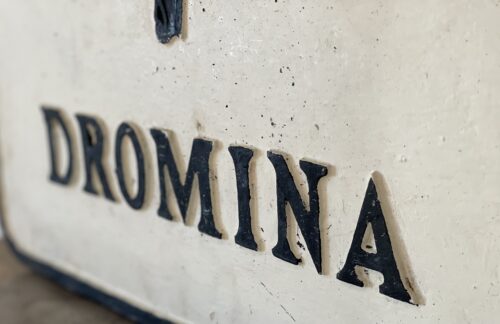
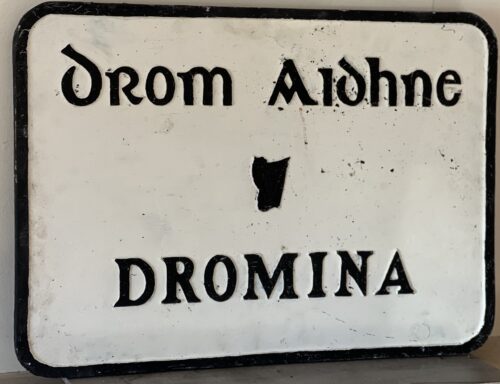
 45cm x 66cm
An absolute once off piece of Irish Memorabilia .We at the Irish Pub Emporium were so lucky to acquire from a private collector who has moved overseas.These superb castiron road signs were commissioned by the Irish Free State in the late 1940s post and were initially the responsibility of the newly formed Irish Tourism Organisation -Fógra Failte (later to become Bord Failte and then Failte Ireland).
"The former 'fingerpost' style of Irish directional signs can still be seen in many rural areas of the Republic of Ireland. These signs differ from their modern-day equivalent as they have black raised text on a white background. Destinations are in all caps (the placename in Irish was on top and in a smaller font than the one in English). Sometimes, the former route number ("T" for trunk road, "L" for link road) can be seen, and the former Bord Fáilte logo can be seen on some (they had responsibility for signs for a time), as well as occasionally a harp. Distances on these signs are in miles.
This style of sign has become a common feature of many tourist images of Ireland and can be seen in some Irish pubs. However, they can be easily rotated, and have been done so on occasion and therefore are not completely reliable. While most examples of these signs still in situ are rural finger-posts, the advance directional sign of this era can still very occasionally be seen: this has a grey background, with the destinations in outlined, white-background boxes linked together with black lines, and the text is not raised on these, unlike on fingerposts. These signs, rare even when the system was in use, can be seen in some areas of Dún Laoghaire and Drogheda. These signs were prescribed under various regulations, with the final design prescribed under the Road Traffic Signs (Regulations) 1962.
Despite the new sign style being introduced in 1977, the design change was never legislated for (apart from a reference to the change to italics in 1989) and the old designs were repealed only under the 1997 regulations, 20 years later.
45cm x 66cm
An absolute once off piece of Irish Memorabilia .We at the Irish Pub Emporium were so lucky to acquire from a private collector who has moved overseas.These superb castiron road signs were commissioned by the Irish Free State in the late 1940s post and were initially the responsibility of the newly formed Irish Tourism Organisation -Fógra Failte (later to become Bord Failte and then Failte Ireland).
"The former 'fingerpost' style of Irish directional signs can still be seen in many rural areas of the Republic of Ireland. These signs differ from their modern-day equivalent as they have black raised text on a white background. Destinations are in all caps (the placename in Irish was on top and in a smaller font than the one in English). Sometimes, the former route number ("T" for trunk road, "L" for link road) can be seen, and the former Bord Fáilte logo can be seen on some (they had responsibility for signs for a time), as well as occasionally a harp. Distances on these signs are in miles.
This style of sign has become a common feature of many tourist images of Ireland and can be seen in some Irish pubs. However, they can be easily rotated, and have been done so on occasion and therefore are not completely reliable. While most examples of these signs still in situ are rural finger-posts, the advance directional sign of this era can still very occasionally be seen: this has a grey background, with the destinations in outlined, white-background boxes linked together with black lines, and the text is not raised on these, unlike on fingerposts. These signs, rare even when the system was in use, can be seen in some areas of Dún Laoghaire and Drogheda. These signs were prescribed under various regulations, with the final design prescribed under the Road Traffic Signs (Regulations) 1962.
Despite the new sign style being introduced in 1977, the design change was never legislated for (apart from a reference to the change to italics in 1989) and the old designs were repealed only under the 1997 regulations, 20 years later. -

 47cm x 35cm Barry's Tea is an Irish tea company founded in 1901 by James J. Barry in Cork. Until the 1960s, tea was sold from a shop in Prince's Street, but thereafter the company expanded its wholesaling and distribution operations. By the mid-1980s Barry's Tea had become a national brand. According to their website, they are currently responsible for 38% of all tea sales in the Irish market (which is worth an estimated €85 million annually). Today, Barry's Tea is also available in the United Kingdom, Spain, and in some areas of Canada, Australia, France, Luxembourg and the United States where there are significant Irish immigrant communities. Members of the Barry family been elected representatives for Fine Gael: the founder's son Anthony Barry (TD 1954–57 and 1961–65), Anthony's son Peter Barry (TD 1969–97) and Peter's daughter Deirdre Clune (TD 1997–2001 and 2007–11, and MEP since 2014).
47cm x 35cm Barry's Tea is an Irish tea company founded in 1901 by James J. Barry in Cork. Until the 1960s, tea was sold from a shop in Prince's Street, but thereafter the company expanded its wholesaling and distribution operations. By the mid-1980s Barry's Tea had become a national brand. According to their website, they are currently responsible for 38% of all tea sales in the Irish market (which is worth an estimated €85 million annually). Today, Barry's Tea is also available in the United Kingdom, Spain, and in some areas of Canada, Australia, France, Luxembourg and the United States where there are significant Irish immigrant communities. Members of the Barry family been elected representatives for Fine Gael: the founder's son Anthony Barry (TD 1954–57 and 1961–65), Anthony's son Peter Barry (TD 1969–97) and Peter's daughter Deirdre Clune (TD 1997–2001 and 2007–11, and MEP since 2014).





